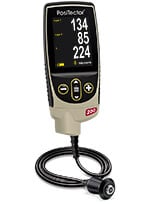![]()
DeFelsko PosiTector 200 Standard Ultrasonic Coating Thickness Gages: 3 Models Available![]()
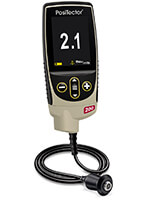 |
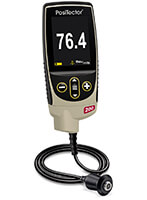 |
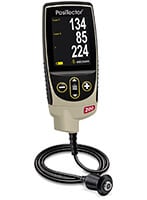 |
| DeFelsko 200 B1 PosiTector Coating Thickness Gages | DeFelsko 200 C1 PosiTector Coating Thickness Gages | DeFelsko 200 D1 PosiTector Coating Thickness Gages |
| APPLICATION | APPLICATION | APPLICATION |
| Polymer coating on wood, plastic, etc. | Coatings on concrete, fiberglass, etc. | Thick, soft coatings like polyurea, asphaltic neoprene, very thick polymers |
| MEASUREMENT RANGE* | MEASUREMENT RANGE* | MEASUREMENT RANGE* |
| 13 to 1000 m 0.5 to 40 mils |
50 to 3800 m 2 to 150 mils |
50 to 7600 m 2 to 300 mils |
| ACCURACY | ACCURACY | ACCURACY |
| ± (2 m + 3% of reading) ± (0.1 mils + 3% of reading) |
± (2 m + 3% of reading) ± (0.1 mils + 3% of reading) |
± (20 m + 3% of reading) ± (1 mils + 3% of reading) |
| CERTIFIED THICKNESS STANDARD | CERTIFIED THICKNESS STANDARD | CERTIFIED THICKNESS STANDARD |
| STDA3 | STDP6 | STDP1 |
*Range limits apply to polymer based coatings only. D probe polyurea range is 50 to 5000 m (2 to 200 mils).-
![]()
DeFelsko PosiTector 200 Advanced Ultrasonic Coating Thickness Gages: 3 Models Available![]()
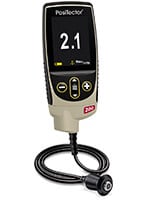 |
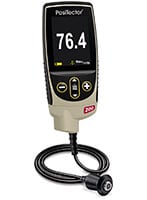 |
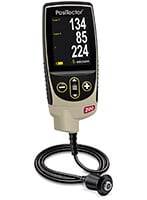 |
| DeFelsko 200 B3 PosiTector Coating Thickness Gages | DeFelsko 200 C3 PosiTector Coating Thickness Gages | DeFelsko 200 D3 PosiTector Coating Thickness Gages |
| APPLICATION | APPLICATION | APPLICATION |
| Polymer coating on wood, plastic, etc. | Coatings on concrete, fiberglass, etc. | Thick, soft coatings like polyurea, asphaltic neoprene, very thick polymers |
| MEASUREMENT RANGE* | MEASUREMENT RANGE* | MEASUREMENT RANGE* |
| 13 to 1000 m 0.5 to 40 mils |
50 to 3800 m 2 to 150 mils |
50 to 7600 m 2 to 300 mils |
| ACCURACY | ACCURACY | ACCURACY |
| ± (2 m + 3% of reading) ± (0.1 mils + 3% of reading) |
± (2 m + 3% of reading) ± (0.1 mils + 3% of reading) |
± (20 m + 3% of reading) ± (1 mils + 3% of reading) |
| MINIMUM INDIVIDUAL LAYER THICKNESS** | MINIMUM INDIVIDUAL LAYER THICKNESS** | MINIMUM INDIVIDUAL LAYER THICKNESS** |
| 13 m 0.5 mils |
50 m 2 mils |
500 m 20 mils |
| CERTIFIED THICKNESS STANDARD | CERTIFIED THICKNESS STANDARD | CERTIFIED THICKNESS STANDARD |
| STDA3 | STDP6 | STDP1 |
*Range limits apply to polymer based coatings only. D probe polyurea range is 50 to 5000 m (2 to 200 mils).
**For multiple layer applications only. Dependent on material to be tested.
![]()
DeFelsko PosiTector 200 Probe Only Ultrasonic Coating Thickness Gages: 3 Models Available![]()
PosiTector gage bodies are compatible with the full range of PosiTector 6000, 200, DPM, SPG, RTR, SST, SHD and UTG probes.
 |
 |
 |
| DeFelsko PRB200B PosiTector Coating Thickness Gages | DeFelsko PRB200C PosiTector Coating Thickness Gages | DeFelsko PRB200D PosiTector Coating Thickness Gages |
| APPLICATION | APPLICATION | APPLICATION |
| Polymer coating on wood, plastic, etc. | Coatings on concrete, fiberglass, etc. | Thick, soft coatings like polyurea, asphaltic neoprene, very thick polymers |
| MEASUREMENT RANGE* | MEASUREMENT RANGE* | MEASUREMENT RANGE* |
| 13 to 1000 m 0.5 to 40 mils |
50 to 3800 m 2 to 150 mils |
50 to 7600 m 2 to 300 mils |
| ACCURACY | ACCURACY | ACCURACY |
| ± (2 m + 3% of reading) ± (0.1 mils + 3% of reading) |
± (2 m + 3% of reading) ± (0.1 mils + 3% of reading) |
± (20 m + 3% of reading) ± (1 mils + 3% of reading) |
| CERTIFIED THICKNESS STANDARD | CERTIFIED THICKNESS STANDARD | CERTIFIED THICKNESS STANDARD |
| STDA3 | STDP6 | STDP1 |
*Range limits apply to polymer based coatings only. D probe polyurea range is 50 to 5000 m (2 to 200 mils).
![]()
DeFelsko PosiTector 200 Ultrasonic Coating Thickness Gages Probe Order Guide![]()
| PosiTector 200 Probes | B | C | D |
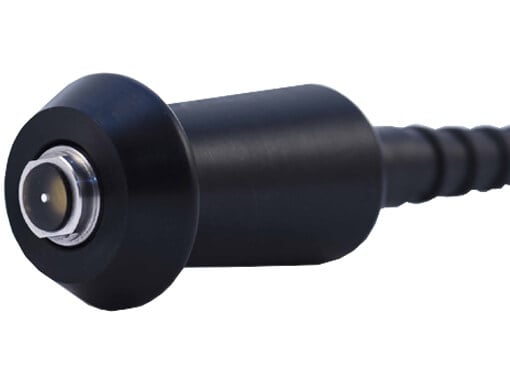 |
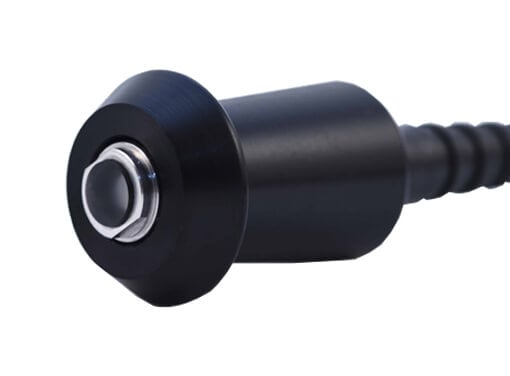 |
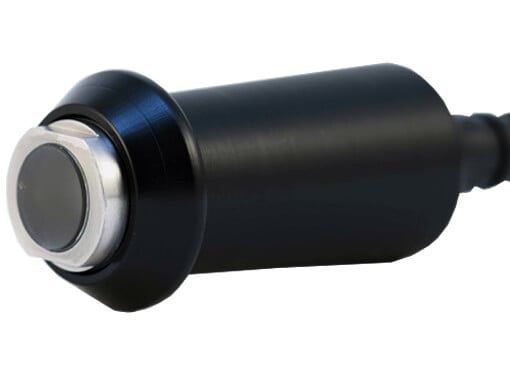 |
|
| Probe Model (Order Code) |
PRB200B | PRB200C | PRB200D |
| TypicalApplications | Polymer coating onwood, plastic, etc. | Coatings onconcrete, fiberglass,etc. | Thick, soft coatings such aspolyurea, asphalitic neoprene,very thick polymers,etc. |
| MeasurementRange* | 13 - 1000 µm 0.5 - 40 mils |
50 - 3800 µm 2 - 150 mils |
50 - 7600 µm 2 - 300 mils |
| Accuracy | ± (2 µm + 3% of reading) ± (0.1 .mil + 3% of reading) |
± (2 µm + 3% of reading) ± (0.1 .mil + 3% of reading) |
± (20 µm + 3% of reading) ± (1 mil + 3% of reading) |
| Minimum LayerThickness** | 13 µm 0.5 mil |
50 µm 2 mils |
500 µm 20 mils |
| Probe Dimensions | 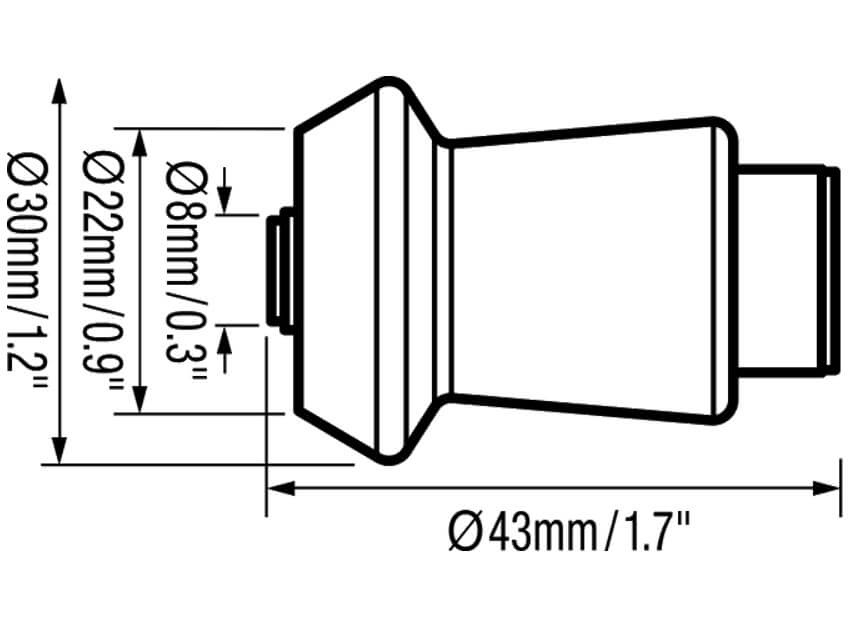 |
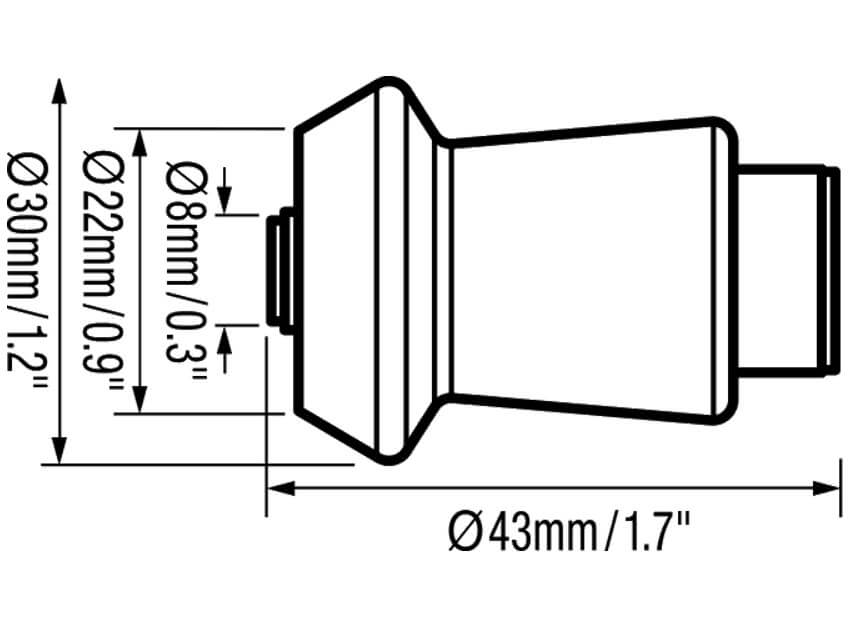 |
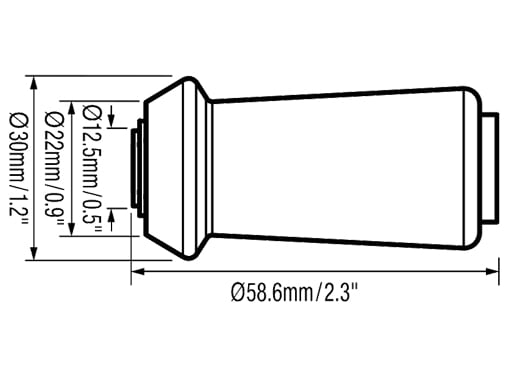 |
* Range limits apply to polymer based coatings only. D probe polyurea range is 50 to 5000 µm (2 to 200 mils)
** For multiple layer applications only. Dependent on material to be tested.
![]() DeFelsko PosiTector Gage Bodies: Feature Comparison Chart
DeFelsko PosiTector Gage Bodies: Feature Comparison Chart![]()
For use with the: DeFelsko PosiTector 6000, DeFelsko PosiTector 200, DeFelsko PosiTector SPG, DeFelsko PosiTector RTR H, DeFelsko PosiTector RTR 3D, DeFelsko PosiTector DPM, DeFelsko PosiTector IRT, DeFelsko PosiTector SST , DeFelsko PosiTector UTG, DeFelsko PosiTector SHD, DeFelsko PosiTector BHI
![]()
DeFelsko PosiTector 200 Ultrasonic Coating Thickness Gages Videos![]()

 |

 |

 |

 |

 |
![]()
PosiSoft Suite of Software![]()
Four FREE and unique ways to view and report your PosiTector and PosiTest data. Learn More
|
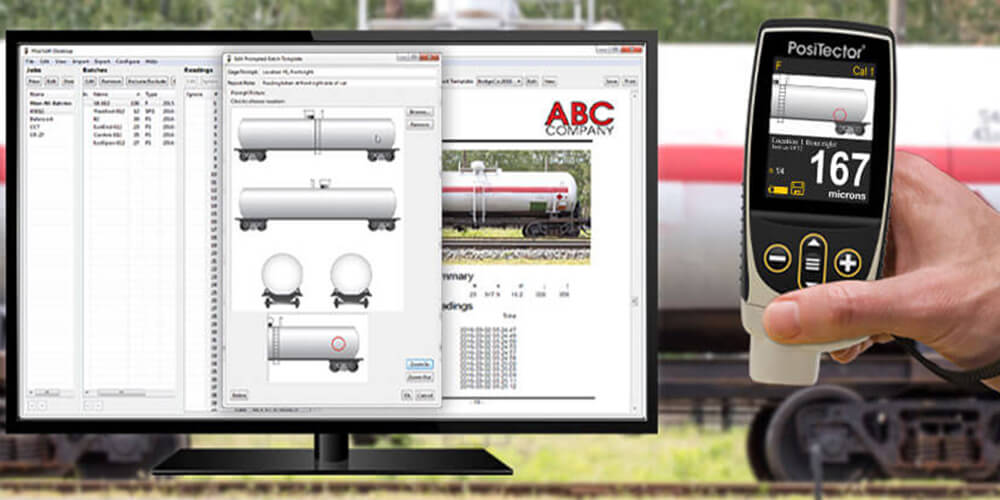 |
Accessories for DeFelsko Inspection Instruments - Online Catalog




